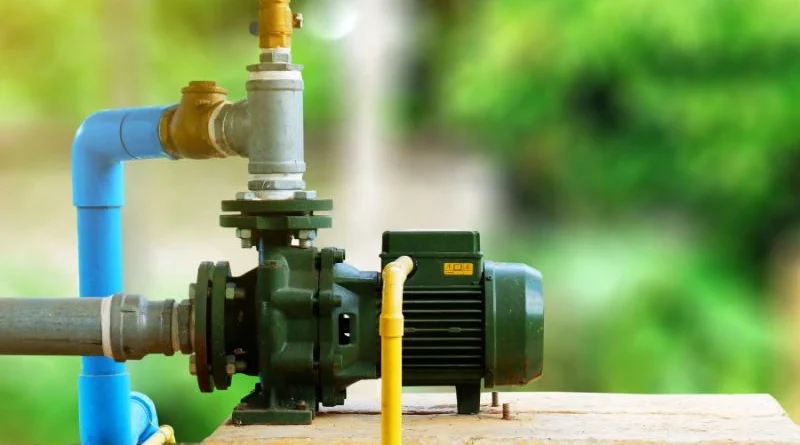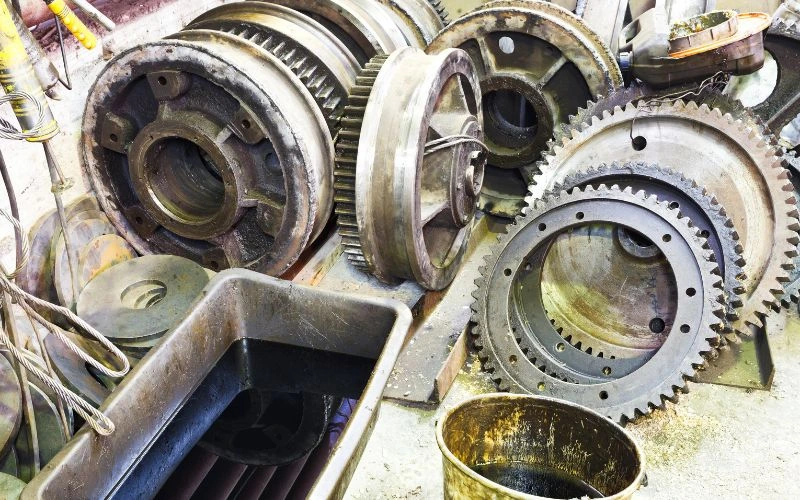
Hysteresis motors are a lesser-known but highly efficient type of electric motor. They work based on the principle of hysteresis, in which the magnetization of a material falls short of the change in the magnetic field. This unique design offers several advantages that make hysteresis motors a valuable component in many applications. This article looks at how hysteresis motors work, their applications and the benefits they offer.
Hysteresis Motor Operation

The operation of hysteresis motors depends on a fascinating principle known as hysteresis. In this process, a rotating magnetic field generated by the stationary stator induces a delayed magnetization in the rotor due to the hysteresis effect of the material. This phase delay creates a torque that causes the rotor to move smoothly and continuously. The operation of hysteresis motors is characterized by precision and smoothness, making them the ideal choice for applications where smooth, vibration-free rotation is essential.
The principle of hysteresis
The heart of the hysteresis motor is the concept of hysteresis. Hysteresis refers to the tendency of a material to “remember” the magnetic field to which it is exposed. When a magnetic field is applied to a material, it becomes magnetized and retains some magnetic properties even when the field is removed. This magnetization lags behind changes in the external magnetic field, resulting in a phase shift.
Basic components
Hysteresis motors are relatively simple and consist of two main components:
- stator : The stator is the stationary part of the motor. It typically consists of a laminated core made of magnetizable material. The stator creates a rotating magnetic field that drives the rotor.
- rotor : The rotor is the moving part of the engine. It is a cylindrical core made of hysteresis material. The rotor is located in the stator and the phase change of the rotor material leads to its rotation.
Working mechanism
The operation of a hysteresis motor can be summarized in the following steps:
- initialization : The rotor is initially in the idle state. The stator creates a rotating magnetic field.
- Magnetization delay : As the stator magnetic field rotates, the magnetization of the rotor is delayed due to hysteresis, creating a torque that causes it to follow the magnetic field.
- Continuous rotation : The rotor continues to rotate as long as the stator magnetic field is active. The rotation speed depends on the frequency of the applied alternating current.
Hysteresis Motor Applications

Hysteresis motors are used in various industries due to their unique operating characteristics. Some notable applications are:
Clocks
Hysteresis motors are often used in analog clocks. Their precise and continuous rotation makes them ideal for telling time accurately. Furthermore, its silent operation is appreciated in such timing devices.
Optical instruments
For certain optical instruments, such as telescopes and microscopes, stable, vibration-free rotation is crucial. Hysteresis motors provide this stability, allowing for precise adjustments without compromising the viewing experience.
Air conditioning systems
Hysteresis motors are used in air conditioning systems to control damper actuators that regulate airflow and temperature. The ability of engines to run quietly and efficiently is beneficial for maintaining a comfortable indoor climate.
robotics
Hysteresis motors are used in robotics, where they are used for fine movements and precision adjustments. These motors are preferred for their low noise and minimal vibration, making them suitable for tasks where precision is required.
Scientific instruments
In scientific research, where precision is of utmost importance, hysteresis motors are used in various instruments, such as spectrometers and laboratory equipment. Its ability to rotate without vibration ensures accurate measurements.
Advantages of hysteresis motors

Hysteresis motors offer several advantages that differentiate them from other types of electric motors:
High precision
One of the biggest advantages of hysteresis motors is their exceptional precision. They provide smooth, continuous rotation without vibrations or jerky movements often found in other types of engines. This precision is invaluable in applications where accuracy is critical, such as scientific instruments and optical devices.
Silent operation
Hysteresis motors are known for their quiet operation. They produce minimal noise and vibration, making them suitable for applications where noise reduction is essential, such as: B. Clocks and air conditioning systems.
longevity
Due to their simple design without brushes or commutators, hysteresis motors tend to have a longer lifespan. Because there are fewer moving parts, less wear and tear results in greater durability and minimal maintenance.
Energy efficiency
Hysteresis motors are energy efficient because they do not have significant energy losses due to friction or electrical resistance. This efficiency is critical in applications where energy conservation is a priority.
Low maintenance effort
Thanks to their robust construction, hysteresis motors require minimal maintenance. Its durability and reliable performance result in long-term cost savings.
Hysteresis motor variants

Although the basic hysteresis motor operates based on the above principles, there are some variations and improvements for specific applications and requirements. Some of these variants include:
Single-phase hysteresis motor
Single-phase hysteresis motors are designed to operate on single-phase alternating current. They are commonly used in household appliances such as electric fans and record players. Their simplicity and reliability make them an economical choice for low-power applications.
Multi-speed hysteresis motor
Multi-speed hysteresis motors are designed with multiple windings or stator configurations. This design allows the motor to operate at different speeds, providing versatility in applications such as turntables and microwave ovens where multiple speed settings are required.
Variable Reluctance Hysteresis Motor
Variable reluctance hysteresis motors combine the principles of variable reluctance motors with hysteresis effects. These motors allow for more precise control of speed and position, making them suitable for applications such as robotics and automation systems.
High Temperature Hysteresis Motor
High temperature hysteresis motors are used in environments where high temperatures are a problem. They are designed to withstand high temperatures without significantly decreasing performance. These motors are used in industrial furnaces and ovens.
Conclusion
In summary, hysteresis motors are a fascinating and highly efficient technology that excels in applications where precision, quiet operation and durability are required. Their unique hysteresis-based operating principle distinguishes them from other types of motors and makes them a valuable choice in a variety of industries. Understanding its benefits and limitations is important for making informed decisions when selecting a motor for specific applications.
Common questions
1. Are hysteresis motors suitable for high torque applications?
Hysteresis motors are typically not used for high torque applications. They are best suited for low-power, high-precision tasks where smooth, continuous rotation is important. Other motors, such as stepper or induction motors, are more suitable for high torque requirements.
2. Are hysteresis motors easy to control?
Hysteresis motors can be controlled effectively with AC voltage at the appropriate frequency. The speed and direction of rotation can be adjusted by changing the frequency of the applied AC signal. However, precise control may be limited compared to other types of motors, making them more suitable for applications where precise speed control is not critical.
3. How do hysteresis motors compare to stepper motors in terms of accuracy?
Hysteresis motors are known for their high precision, but stepper motors can provide even more precise control in certain applications. Stepper motors move in discrete steps, making them suitable for applications where precise position control is essential. Hysteresis motors, on the other hand, offer smooth, continuous rotation, which may be better suited for applications that require smooth motion rather than discrete steps.

